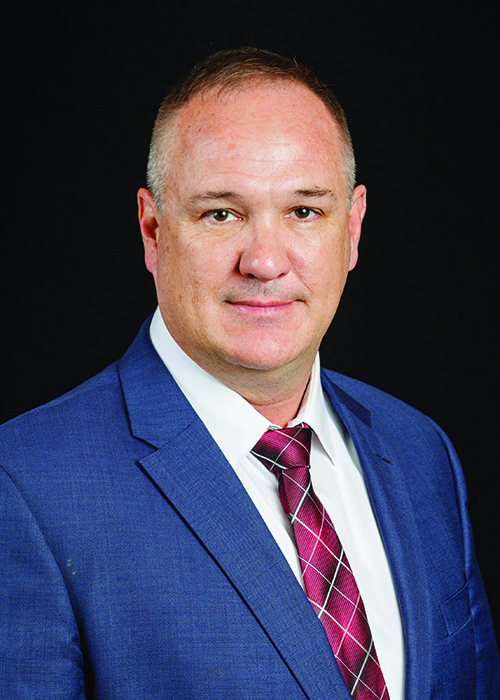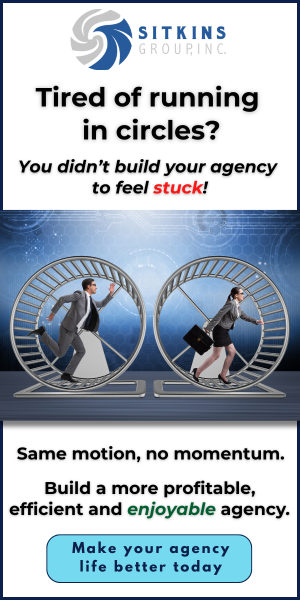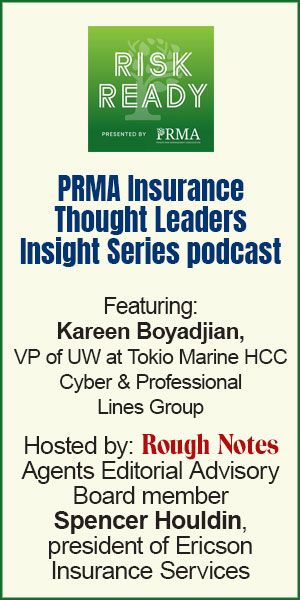From up-front planning to
ongoing assessment, here’s
advice to expand your agency’s reach
By Mark Brandt
Any task is easier when you break it into manageable steps. If you want to open a commercial insurance agency (or expand your personal lines agency into commercial lines), the following 10 steps can help you achieve success.

Step 1: Determine what licensing you need. By the time you’re ready to open a commercial insurance agency or evolve from being a personal lines shop, you may have some insurance industry experience and licenses under your belt. However, you may need additional licensing before you can sell commercial insurance.
Contact the insurance licensing boards in the states where you operate to find out exactly what the requirements are.
Step 2: Consider a niche. Commercial insurance is a broad market. In fact, it’s so broad that you may have trouble establishing your business if you don’t narrow down your options.
Developing a niche is a good way to get started. For example, if you know a little about the restaurant industry (or you’re willing to learn), you may want to carve out a market selling insurance to restaurants. That’s just one idea. To identify a niche, consider your strengths, your connections, and the needs of businesses in your area.
To stand out from the competition, you’ll need to give business owners in the market you target a reason to choose you—for example, because you understand their risks well or because you have access to specialty carriers that serve their market.
Step 3: Gain carrier access. This brings us to the next point: To ensure you can serve every client who walks in your door, you’ll need access to as many carriers as possible.
One option is to gain direct appointments with carriers. This often sounds ideal because you don’t have to give up a part of your commissions to a third party. But there’s a catch: You have to meet the carrier’s requirements, which may be difficult.
The other option is to access carriers through an insurance network. This is often the easier approach, connecting you with a wide range of options in both personal and commercial lines. The downside is a network will require a commission split and/or fees. Since some networks take more than others, it’s important to shop around for the smartest contract.
There’s also the hybrid approach: gaining direct appointments when you can and using an insurance network when you need to. This can give you the best of both worlds—but watch out, some networks have restrictive contracts that prohibit this practice.

Step 4: Access the E&S market. You will likely encounter some risks that are hard (or even impossible) to place in the traditional insurance market. At that point, you will need to either turn the client away or place the risk in the excess and surplus market (also called the E&S market, the surplus market, or the non-admitted market). If you’re serious about growing your book of business, the latter option is the way to go.
Your state may have additional licensing requirements for the E&S market. You’ll also need access to non-admitted carriers. As with admitted carriers, you can gain access through an insurance network. Alternatively, you can use a wholesaler or MGA.
Step 5: Create your marketing strategy. Once you have your licenses and carrier access, you will need to fill your pipelines with prospects. Finding them requires marketing, including:
- Digital marketing. Build an online presence that includes a website, social media, pay-per-click ads and a Google Business Profile.
- Print advertising. Spend money on traditional advertising to give your new agency a jump-start. This could involve sending direct mail or placing an ad in an industry journal.
- Community involvement. Sponsor local events to establish your agency as a part of the community.
- Education. Establish yourself as an insurance expert by sharing your knowledge, for example, by volunteering to speak at community or business events.
- Word of mouth. Gain referral business. This is often highly persuasive and cost effective. However, you’ll need to establish yourself as worthy of referrals first.
The methods you should use will depend on your strengths as well as your audience. Your strategy may also evolve over time.
Step 6: Track renewal dates. Renewal dates (also called x-dates) are a big deal in commercial insurance. Whereas individuals might switch auto and home insurers in the middle of a policy term, business owners usually wait until the renewal date.
Because the renewal process takes time, you should reach out to a business prospect about six months ahead of the x-date and plan to provide a quote at least 60 days before the renewal date.

Step 7: Obtain Broker of Record letters. You probably don’t like it when you spend a lot of time preparing a quote for a client, only to have that client buy insurance through another agent. Insurance carriers don’t like wasting their time, either.
If multiple agents ask for quotes for the same client, everyone ends up wasting time. To avoid this, many carriers require a Broker of Record letter that identifies you as the broker handling the policyholder’s insurance. You should obtain one when you start working with new commercial clients.
Step 8: Create a plan to follow up. Unlike individuals, businesses don’t usually change insurance carriers on a whim; switching carriers is a major process, almost like changing your business bank accounts. Business owners may stall, even when you’ve provided the best option, simply because it’s a big task.
Following up is critical. Assume it will take around eight to 12 follow-ups to make a sale. For more expensive insurance products and buying decisions that involve multiple stakeholders, you might even need more follow-ups.
Step 9: Enlist support. As a commercial insurance agent, you may encounter hard-to-place risks and situations you’ve never faced before. When this happens, it’s useful to have some support to lean on.
Carriers often provide helpful resources. For example, many carriers provide risk management guidance you can share with your clients. Insurance networks are another great resource. In addition to providing access to carriers, networks may offer guidance with questions and difficult accounts. Because some networks provide more support than others, this is something to research before you sign up.
The right technology will be a lifesaver. When you’re managing long renewal processes and multiple follow-ups, a customer management system (CMS) is critical. There are also tools available to help with website creation, email marketing, and social media scheduling.

Step 10: Assess and adjust. As you grow your commercial agency, you’ll need to assess your progress and adjust your strategies to adapt to changing market conditions and focus on the activities that provide the best results.
Focusing on key metrics will help you measure your success:
- How many leads did a specific type of marketing generate?
- What was the cost per lead?
- How many customers did you acquire?
- What was the cost per customer?
Give business owners in the market you target a reason
to choose you – for example, because you understand their
risks well or because you have access to specialty carriers that serve their market.

The author
As Vice President, Commercial Lines, at Smart Choice, Mark Brandt facilitates carrier relationships for the commercial division. With nearly 30 years of insurance experience, he’s able to offer insights into what it takes to succeed in the industry. For more information on Smart Choice’s agent services, visit smartchoiceagents.com/agent-services.






